Discovery of 8,000-year-old settlement is 'mind-blowing'
Prof Eileen Murphy is originally from Derrygonnelly and is delighted to put the village 'on the map'
- Published
Archaeologists searching for the remains of a 400-year-old castle have unexpectedly found evidence of an 8,000-year-old settlement.
The team from Queen's University Belfast (QUB) was hoping to find the ruins of Derrygonnelly Castle in County Fermanagh, but they also discovered artefacts dating back to the Mesolithic period.
Prof Eileen Murphy of the Centre of Community Archaeology at QUB said the find was "mind-blowing".
"With archaeology you never know what you're going to find. We've actually been able to push the date of this site back from the 400 years we were looking for to about 8,000 or 9,000 years ago, to the time of Ireland's first settlers in the early Mesolithic."
Derrygonnelly is 'now on the map'
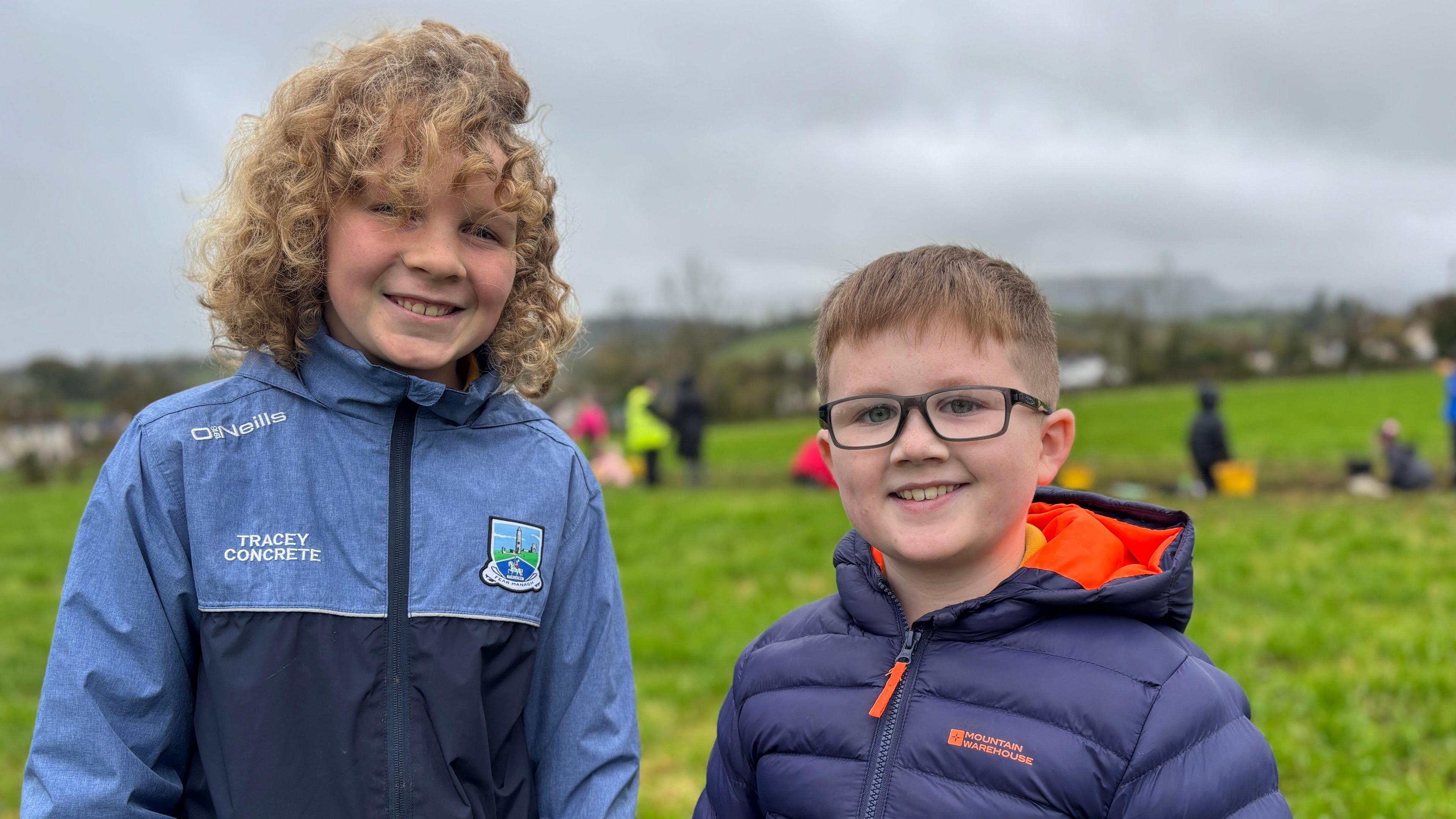
Niall and Eoin helped excavate the site along with their classmates
"It's hugely exciting. There's very little early Mesolithic evidence in County Fermanagh so we've put Derrygonnelly on the map now as a location for early Mesolithic activity".
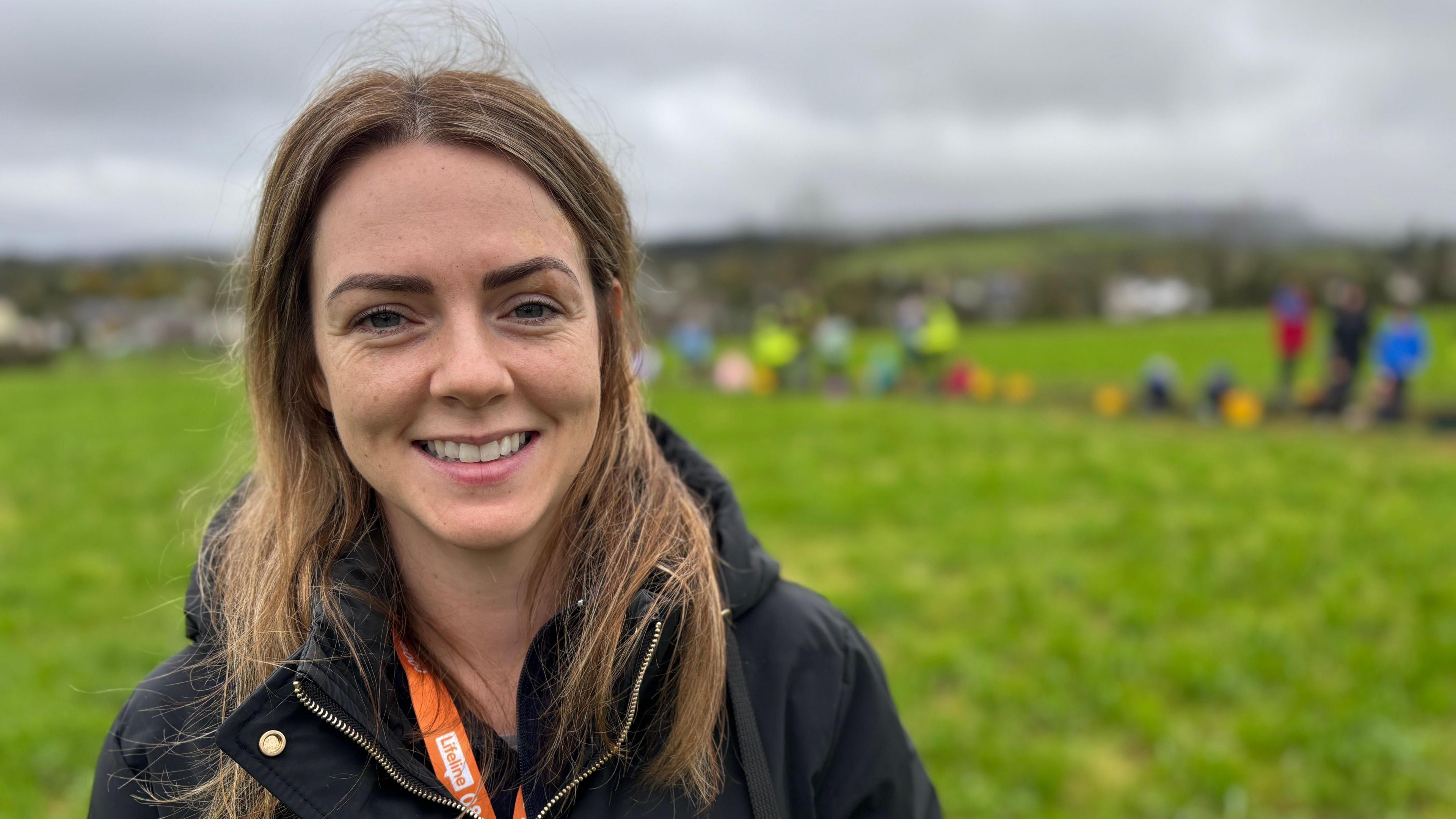
Teacher Maria Scallon says her primary 6 and 7 classes love learning history
The landscape in Derrygonnelly would have suited early humans.
"It's a lovely, flat plateau right beside the River Sillies, and it would have been a really rich source of fish and waterbirds and an ideal place for hunter-gatherers to live".
The finds include microliths or tiny flints used as tools for hunting and fishing.
"Really importantly we've got a core, which is a lump of stone that the microliths would have been struck from, so that tells us they were actually making them on site.
"There were early Mesolithic people using the landscape here maybe even living here in one of their camps".
'Absolute buzz'
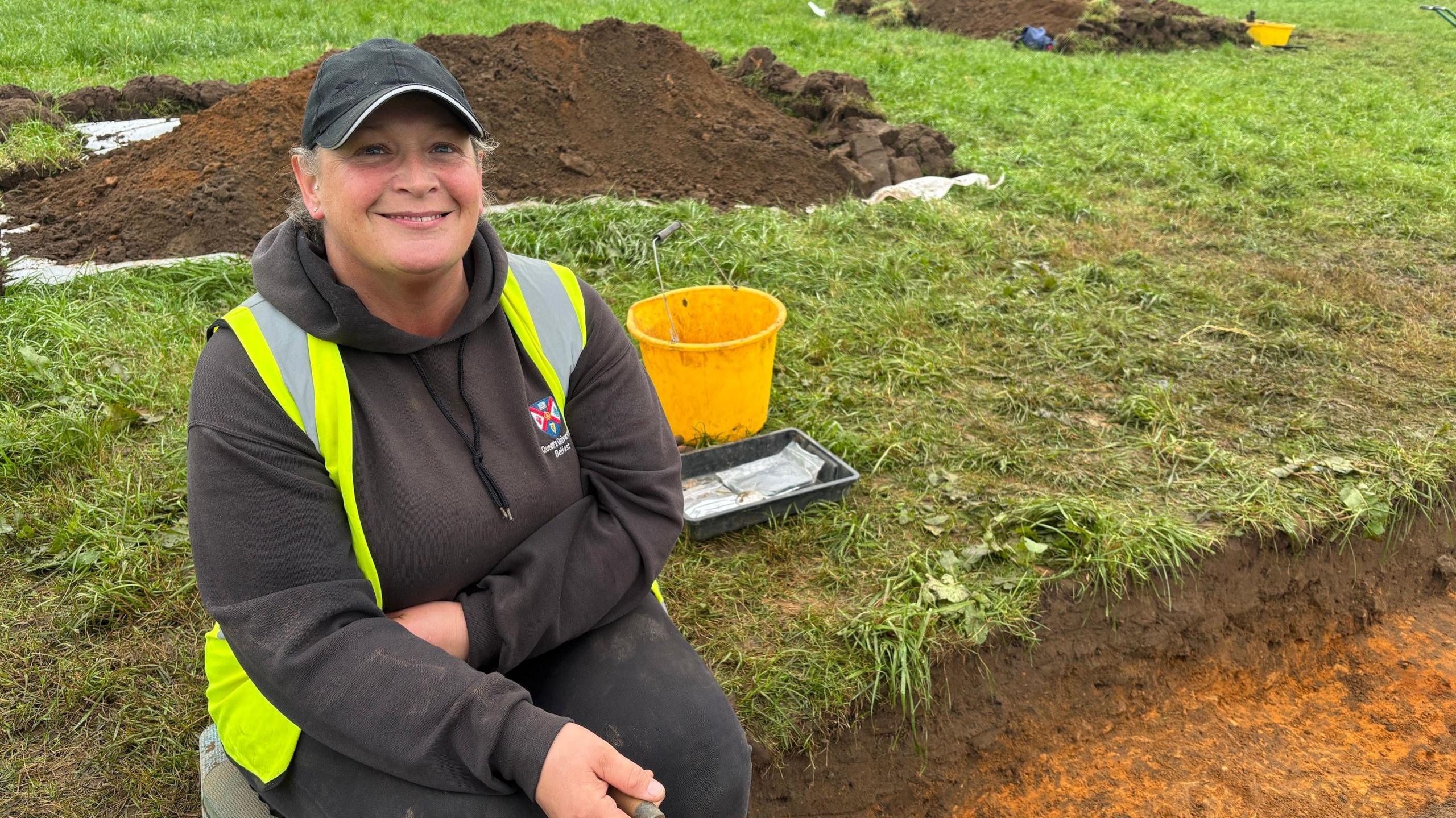
Dr Heather Montgomery says the digs wouldn't be possible without community help
As well as the 8,000-year-old settlement discovery, evidence of a Bronze-age house dating back 4,000 years was also found by Roy Browne from Comber who was a volunteer on the dig.
"It's a site that keeps on giving," said Prof Murphy.
"We've got a lovely Bronze Age house and Roy has just discovered Bronze Age pottery at the bottom of a post hole. So we've been able to date it while we're out to on site. So that's bringing it back to about 4,000 years ago, it's incredible".
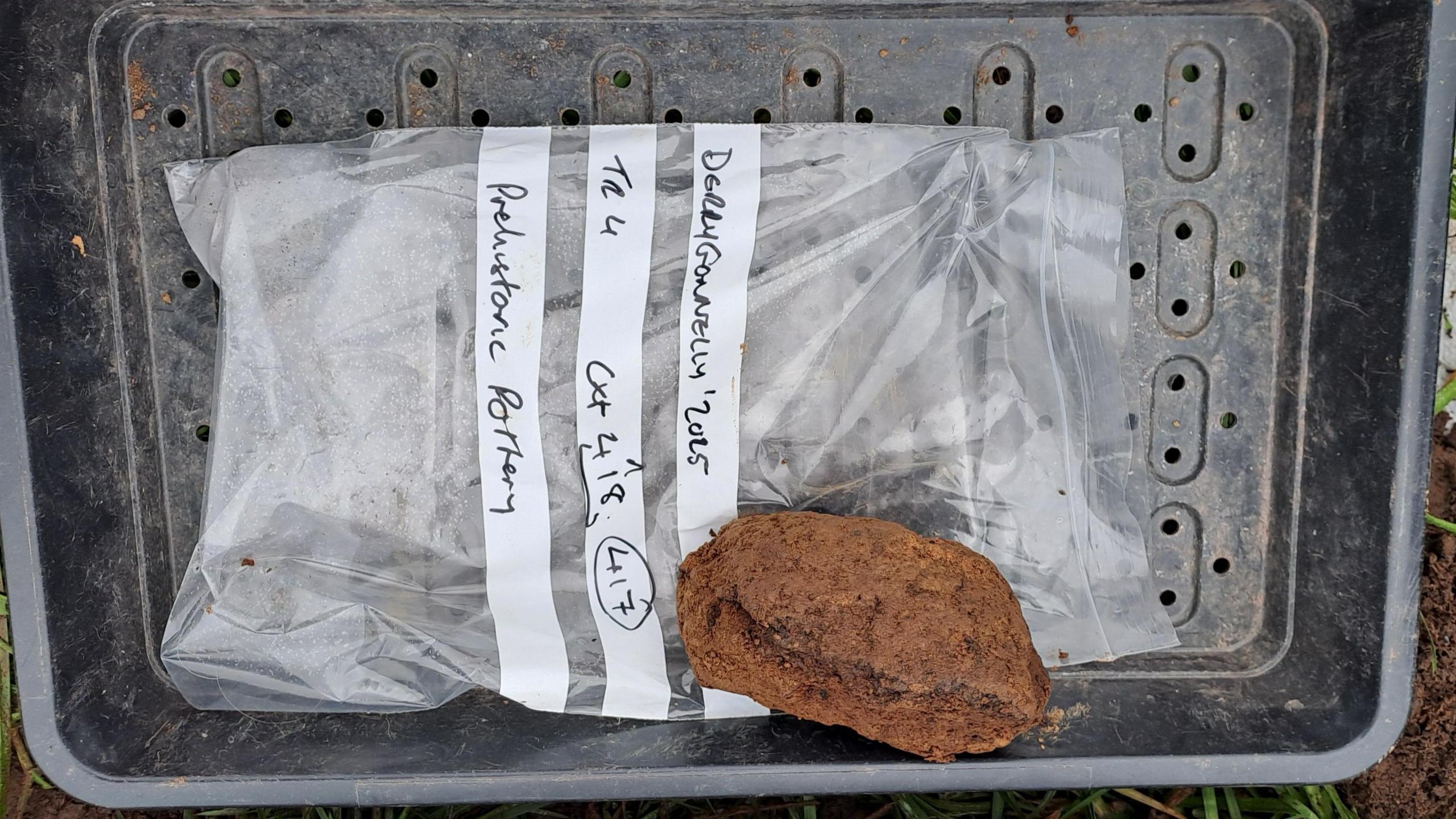
Prehistoric pottery that was discovered at the dig
For Dr Heather Montgomery, the project manager, it has been delightful to have such treasures revealed.
"Everybody's talking about it in the town. There's an absolute buzz about it. We have found stuff, archaeology, we never thought would be possible.
"But also the community and the local school children are learning so much about their heritage, the history of this site and this location, they never had the opportunity to do before. They're excited."
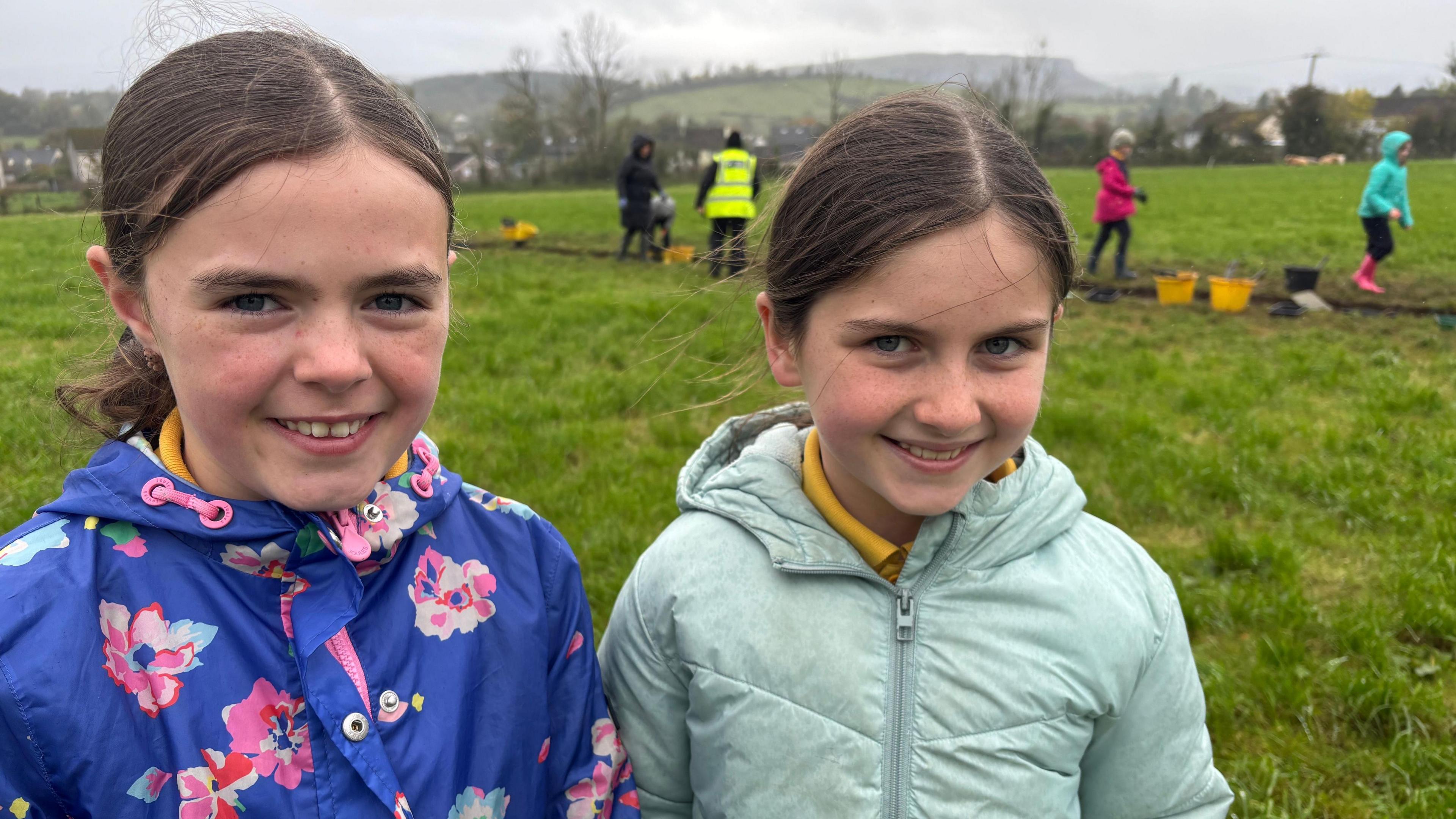
Clodagh and Niamh helped discover some ancient treasures
During the two-week dig more than 200 volunteers helped the archaeologists out. Among them were pupils from St Patrick's Primary School in Derrygonnelly.
Maria Scallon who teaches P6 and P7 said the children were very excited to see the dig happening right beside the school.
"It started all these questions about where we live and about the old church. It has made them question history. They have just loved today and I definitely think there are some future archaeologists in the class."
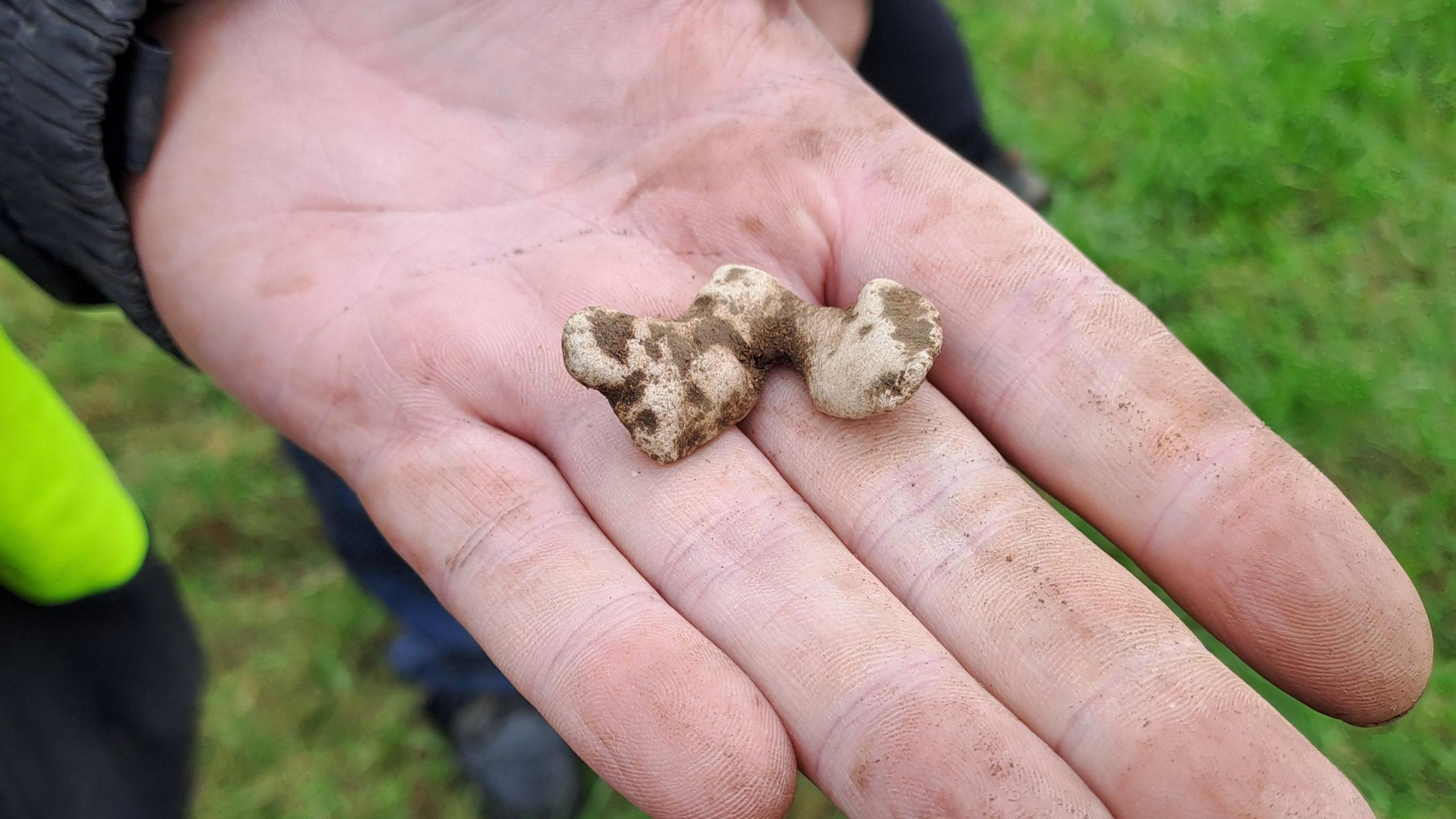
Another one of the artefacts that was found at the dig
And a strong contender to be a future archaeologist is Niamh, 10, who found an artefact from the Mesolithic period.
"I didn't know what it was so I went and asked the man and he said it was very cool. He took it to show his friends, and they said it was thousands of years old".
Niamh's find was a chert – a piece of flint - dating back to the middle stone age.
For nine-year-old Niall, the dig has been "good but it's been messy".
"To find the artefacts you really have to get your hands into the soil and you can get dirty when you are trying to get into it".
But for Clodagh,10, the day out at the dig beat being in the classroom.
"I really like it. Being here is interesting, but schoolwork is boring," she said.
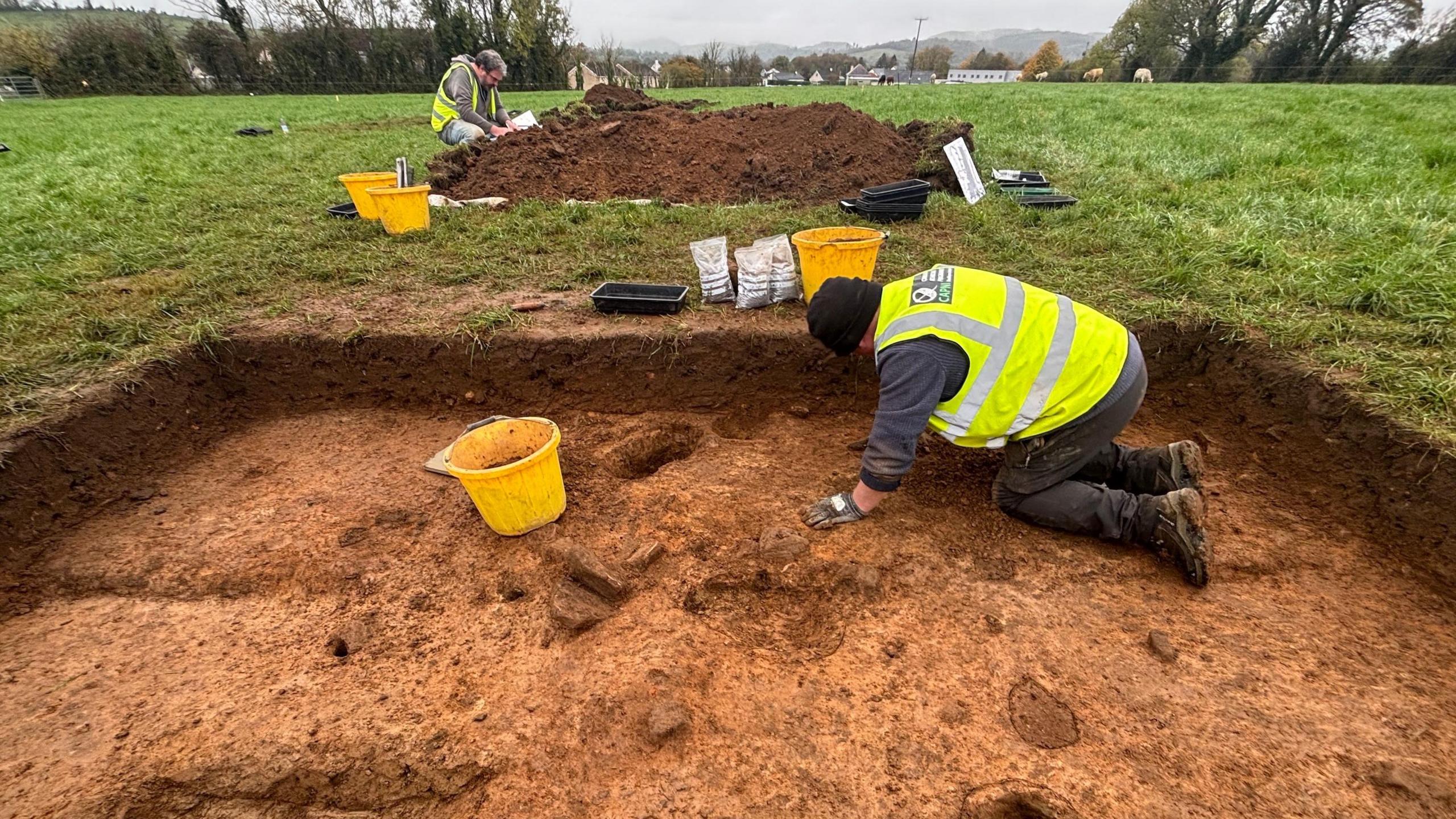
Volunteers worked alongside archeologists to excavate the site
The dig was made possible through the Community Archeology Programme Northern Ireland (CAPNI) and funded by the National Lottery Heritage Funds.
Prof Murphy, who is originally from Derrygonnelly, hopes that future funding will make it possible to further explore the history of the unique site.